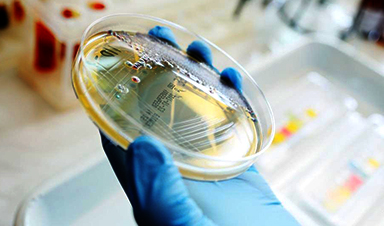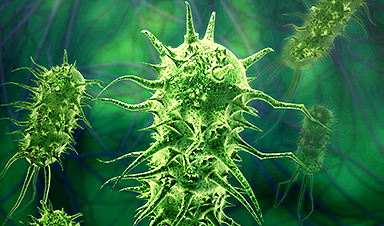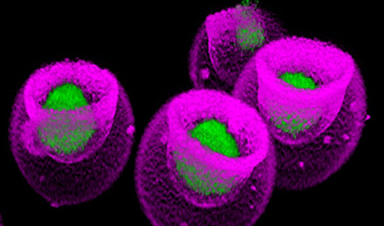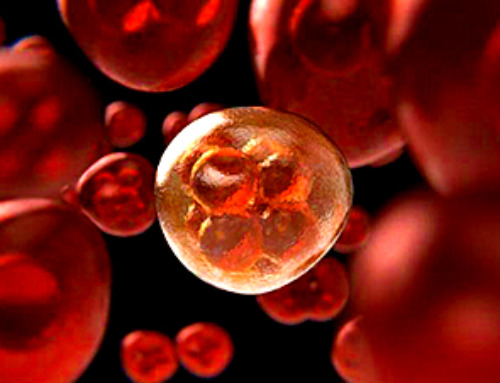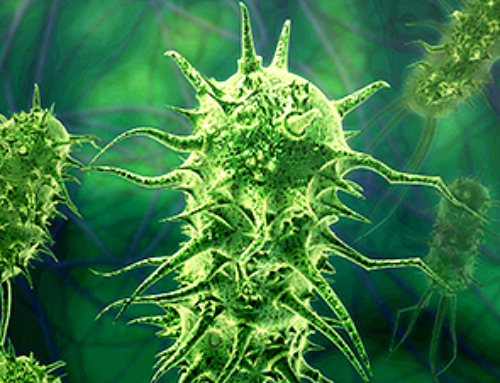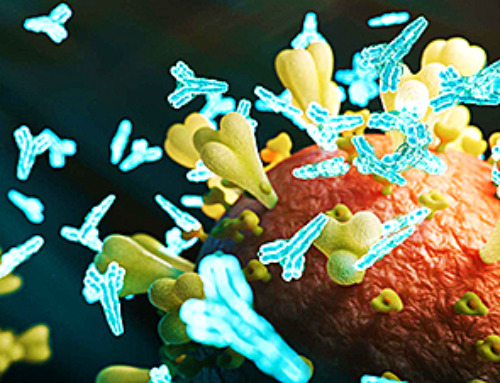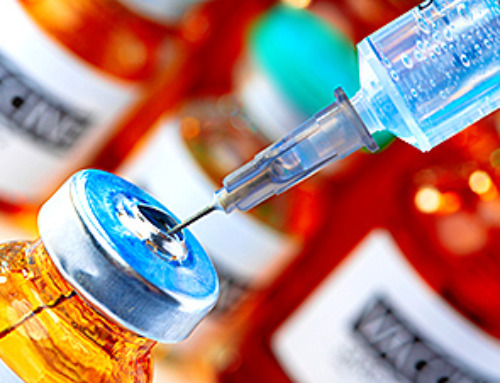A bottom-up approach to produce copper oxide (CuO) nanoparticles on hydrophilic graphene oxide (GO) nanosheets has been employed in the latest research published in Journal of Material Science: Materials in Medicine.
The CuO/GO nanocomposite was created by combining two different predecessors, copper nitrate and citric acid, with occasional mixing of GO solutions.
Importance of Copper Oxides
Copper Oxide (CuO) nanoparticles have experienced an accelerated surge in many potential applications due to their direct bandgap nature, strong electrochemical performance, and cheaper cost of manufacture. Cuprous Oxide (Cu2O) and Cupric Oxides (CuO) are the two most common forms found in nature, comprising the two most important stoichiometric compounds in the CuO systems as a whole.
They have a broad array of applications, including hydrogen gas sensors, volatile organic molecules, hydrolysis, and, most notably, solar photovoltaic cells. Because of their extensive applicability in electrolytic and smart appliances, the production of CuO nanoparticles in the laboratory is critical.
Limitations of Copper Oxide Nanocomposites
Although the usage of copper oxide nanoparticles (CuO NPs) in many applications has expanded tremendously, there are numerous restrictions to their use.
The complications that arise as a result of misinterpreting the toxicity are based on the fact that CuO nanoparticles bind, interact with living cells, and cause a change in surface properties. The toxic effects of nano-sized CuO on neurons cause cognitive dysfunction, which affects memory and learning aspects. CuO NPs has a negative impact on the structure of many organs, as observed in histological examinations.
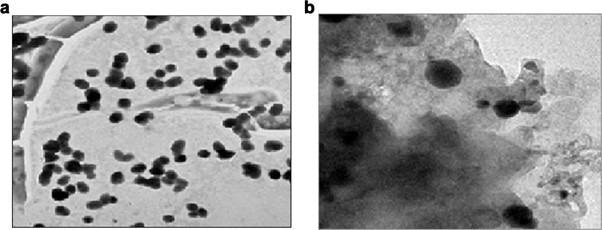
HR-TEM of CuO/GO nanocomposites indicating the CuO deposits over GO sheets (indicated by arrows) © Biswas, K. et al., (2021)
Importance of Graphene Oxide Nanosheets
GO-based nano screens have found extensive applications in gas barrier nanocomposites due to their high dimensional nanosheet composition, which provides remarkable insulative properties to most gases. Because of their higher moisture permeability, GO nanosheet films are widely considered as promising nanomaterials for water treatment applications.
The orientated GO nanosheets inflate when water enters between them because GO films have a significant attraction for water. In addition, due to their shape and great chemical stability, graphene derivatives show potential for anti-corrosive polymer coatings.
Research Findings regarding Antibacterial Activity
The antimicrobial property of CuO/GO nanocomposite was investigated preliminary using the agar well diffusion (AWD) technique. The latest research reveals that CuO nanoparticles demonstrated extensive antimicrobial properties against Gram-positive and Gram-negative pathogens.
It was discovered that nanomaterials penetrate the cell wall of bacteria due to their sticking capability, consequently affecting the integrity of the structure of the bacterial surface and resulting in permeation into the bacteria, resulting in cidal activity of the bacterial cells.
The penetrated nanoparticles inside the bacteria generate net reactions with essential biomolecules like proteins and nucleic acids, resulting in the generation of reactive oxygen species (ROS) radicals, which cause cellular stability deterioration and death of hazardous cells.
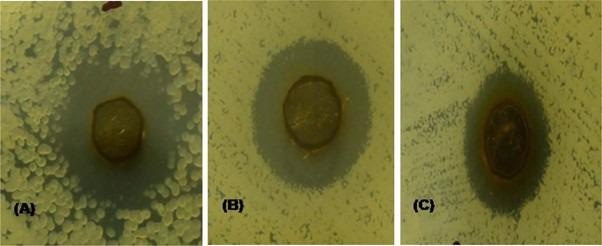
Antibacterial activity in agar well diffusion method (A) E. coli (B) S. aureus (C) P. aeruginosa. © Biswas, K. et al., (2021)
Findings Regarding Antioxidant Activity
The antioxidant properties of nanocomposites were evaluated. CuO/GO nanocomposites were added to the culturing of A-431 cancerous cells at varying doses (0.97 nM to 1000 nM) for 24 hours at 37 °C. It was discovered that when the concentration of the CuO/GO nanocomposites increased, the proportion of viable cancer cells appeared to decrease concurrently.
Results demonstrated that ROS generation during cell functions, which occurs after being exposed to the test sample, plays an important part in the mechanism of cytotoxicity of CuO/GO nanocomposites in epidermoid cancer. For CuO/GO nanocomposite, the IC50 value was 44.86 ± 1.74 μg/ml, indicating significant antioxidant potential.
Antioxidant activity of CuO/GO nanocomposite in terms of radical scavenging activity (A) DPPH and (B) ABTS.
In short, when evaluated in-vitro, the nanocomposites showed great antibacterial and antioxidant ramifications, making it part of the nanocomposites’ therapeutic action. The produced nanocomposites had an average particle size of around 20 nm, which was large enough to evoke biological activity when evaluated. These properties open doors to further evaluate their applications for various purposes.
News
Scientists study lipids cell by cell, making new cancer research possible
Imagine being able to look inside a single cancer cell and see how it communicates with its neighbors. Scientists are celebrating a new technique that lets them study the fatty contents of cancer cells, [...]
Antibiotic Breakthrough: Revolutionary Chinese Study Paves Way for Superbug Defeating Drugs
New research reveals that fluorous lipopetides act as highly effective antibiotics. Bacterial infections resistant to multiple drugs, which no existing antibiotics can treat, represent a significant worldwide challenge. A research group from China has [...]
Signs of Multiple Sclerosis Show Up in Blood Years Before Symptoms Appear
UCSF scientists clear a potential path toward earlier treatment for a disease that affects nearly 1,000,000 people in the United States. By Levi Gadye In a discovery that could hasten treatment for patients with multiple [...]
Advanced RNA Sequencing Reveals the Drivers of New COVID Variants
A study reveals that a new sequencing technique, tARC-seq, can accurately track mutations in SARS-CoV-2, providing insights into the rapid evolution and variant development of the virus. The SARS-CoV-2 virus that causes COVID has the unsettling [...]
No More Endless Boosters? Scientists Develop One-for-All Virus Vaccine
End of the line for endless boosters? Researchers at UC Riverside have developed a new vaccine approach using RNA that is effective against any strain of a virus and can be used safely even by babies or the immunocompromised. Every [...]
How Are Hydrogels Shaping the Future of Biomedicine?
Hydrogels have gained widespread recognition and utilization in biomedical engineering, with their applications dating back to the 1960s when they were first used in contact lens production. Hydrogels are distinguished from other biomaterials in [...]
Nanovials method for immune cell screening uncovers receptors that target prostate cancer
A recent UCLA study demonstrates a new process for screening T cells, part of the body's natural defenses, for characteristics vital to the success of cell-based treatments. The method filters T cells based on [...]
New Research Reveals That Your Sense of Smell May Be Smarter Than You Think
A new study published in the Journal of Neuroscience indicates that the sense of smell is significantly influenced by cues from other senses, whereas the senses of sight and hearing are much less affected. A popular [...]
Deadly bacteria show thirst for human blood: the phenomenon of bacterial vampirism
Some of the world's deadliest bacteria seek out and feed on human blood, a newly-discovered phenomenon researchers are calling "bacterial vampirism." A team led by Washington State University researchers has found the bacteria are [...]
Organ Architects: The Remarkable Cells Shaping Our Development
Finding your way through the winding streets of certain cities can be a real challenge without a map. To orient ourselves, we rely on a variety of information, including digital maps on our phones, [...]
Novel hydrogel removes microplastics from water
Microplastics pose a great threat to human health. These tiny plastic debris can enter our bodies through the water we drink and increase the risk of illnesses. They are also an environmental hazard; found [...]
Researchers Discover New Origin of Deep Brain Waves
Understanding hippocampal activity could improve sleep and cognition therapies. Researchers from the University of California, Irvine’s biomedical engineering department have discovered a new origin for two essential brain waves—slow waves and sleep spindles—that are critical for [...]
The Lifelong Cost of Surviving COVID: Scientists Uncover Long-Term Effects
Many of the individuals released to long-term acute care facilities suffered from conditions that lasted for over a year. Researchers at UC San Francisco studied COVID-19 patients in the United States who survived some of the longest and [...]
Previously Unknown Rogue Immune Key to Chronic Viral Infections Discovered
Scientists discovered a previously unidentified rogue immune cell linked to poor antibody responses in chronic viral infections. Australian researchers have discovered a previously unknown rogue immune cell that can cause poor antibody responses in [...]
Nature’s Betrayal: Unmasking Lead Lurking in Herbal Medicine
A case of lead poisoning due to Ayurvedic medicine use demonstrates the importance of patient history in diagnosis and the need for public health collaboration to prevent similar risks. An article in CMAJ (Canadian Medical Association [...]
Frozen in Time: How a DNA Anomaly Misled Scientists for Centuries
An enormous meteor spelled doom for most dinosaurs 65 million years ago. But not all. In the aftermath of the extinction event, birds — technically dinosaurs themselves — flourished. Scientists have spent centuries trying [...]
